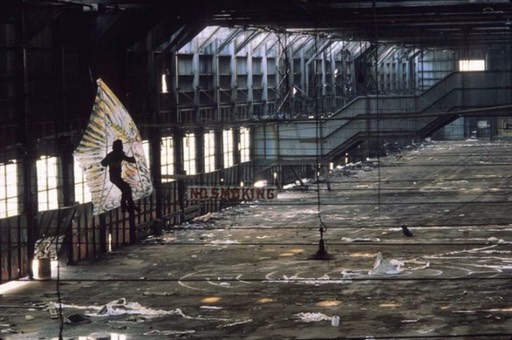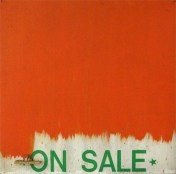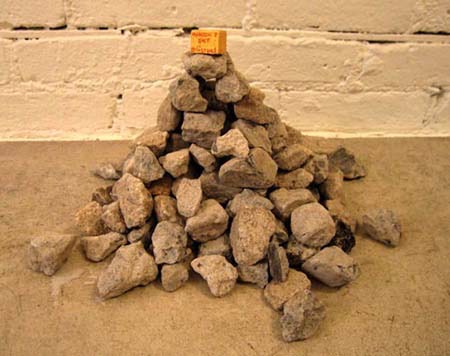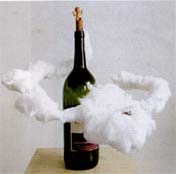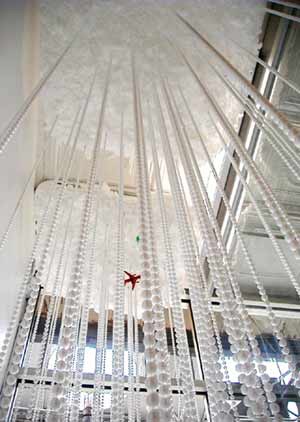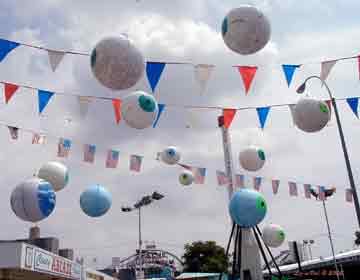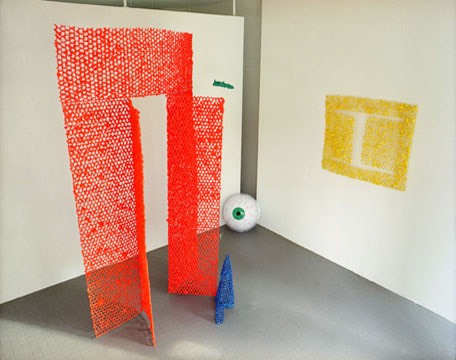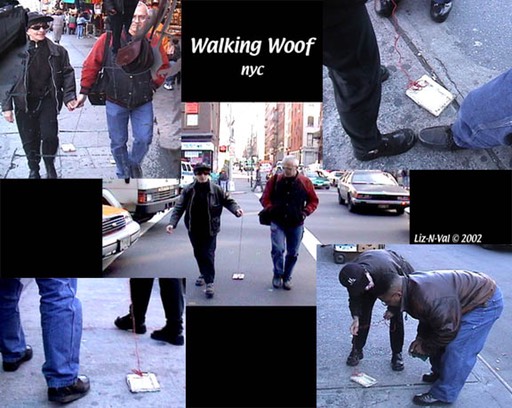Something Possible Everywhere: Pier 34 NYC, 1983–84
Hunter College Art Galleries Present:
Something Possible Everywhere: Pier 34 NYC, 1983–84
Curated by Jonathan Weinberg
Featuring the photographs of Andreas Sterzing September 30–November 20, 2016
Opening Reception: Thursday, September 29, 7–9pm
205 Hudson Gallery
205 Hudson Street
Entrance on Canal Street between Hudson and Greenwich Streets New York, New York 10013
Hours: Wednesday–Sunday, 1–6pm
THE EXHIBITION
Something Possible Everywhere: Pier 34 NYC, 1983–84 is the first exhibition to revisit the extraordinary place and time when David Wojnarowicz and his friends and peers including Jane Bauman, Mike Bidlo, Paolo Buggiani, Keith Davis, Steven Doughton, John Fekner, David Finn, Jean Foos, Luis Frangella, Valeriy Gerlovin, Judy Glantzman, Alain Jacquet, Kim Jones, Rob Jones, Ruth Kligman, Stephen Lack, Liz-N-Val, Bill Mutter, Michael Ottersen, Rick Prol, Russell Sharon, Kiki Smith, Huck Snyder, Betty Tompkins, and Ruth Zwillinger among many others, effectively seized a city-owned pier and filled it with art. Andreas Sterzing’s remarkable photographs, along with related images by Peter Hujar, Marisela La Grave, and Dirk Rowntree, document how these artists turned the Ward Line shipping terminal at the foot of Canal Street, into a series of makeshift art galleries and studios.
Accompanying Sterzing’s photographs are over 75 paintings, drawings, and sculptures, made by the many artists who worked on the pier. Sadly, the building was demolished and almost all of the art made on the pier no longer exists, but the presence of contemporaneous work in the exhibition makes tangible something of the physicality of the waterfront art and its larger aesthetic context.
The numerous artists who worked on Pier 34 crossed generations, from established figures like Alain Jacquet and Ruth Kligman, to emerging artists like Steven Doughton and Rhonda Zwillinger. They utilized a variety of media and styles, from the performance art of Kim Jones and Paolo Buggiani, to the expressionism of Judy Glantzman and Stephen Lack. This diversity and the site-specificity of works by artists like John Fekner and Teres Wydler, challenges the stereotypes of the 1980s art scene as market- driven and conservative with a turn toward easel painting. Indeed, the chief instigators of the Pier 34 experiment, Wojnarowicz and Bidlo, self-consciously saw the site as anti-commercial.
As rumors spread in the spring of 1983 of what was happening on the waterfront, Bidlo and Wojnarowicz released a statement to friends in the press that explained their resistance to the gallery system and the aim to create an opportunity for anyone “to explore any image in any material on any surface they chose. It was something no gallery would tolerate...” Above all, they claimed that Pier 34 forged a community: “People who lived in this city for years said it was the first time they experienced fulfillment in terms of contact with the art scene and strangers.”i
This exhibition is made possible by the generous support provided by Carol and Arthur Goldberg, Joan and Charles Lazarus, Dorothy Lichtenstein, and an anonymous donor.
Andreas Sterzing studied photography at Bayerische Staatslehranstalt für Fotografie in Munich, Germany. In 1982 he moved to New York and worked for photographers Hans Namuth, Evelyn Hofer, Annie Leibowitz and others while establishing himself as an editorial and portrait photographer. He currently lives and works in London and Cornwall, England.
Hunter College Art Galleries
Andreas Sterzing, “David and Mike at the Pier” (1983) (courtesy the artist and Hunter College Art Galleries, New York)
Liz-N-Val Dog (left)
Something Possible Everywhere: Pier 34 NYC, 1983–84, curated by Jonathan Weinberg at the 2o5 Hudson Street Gallery of the Hunter College Art Galleries, is the first exhibition to focus on this era and this place. Other recent shows have touched on it, such as The Piers: Art and Sex along the New York Waterfront (co-curated by Weinberg) at the Leslie-Lohman Museum of Gay and Lesbian Art, and Pier 34 did follow a number of other art projects in the Hudson River ruins, including Gordon Matta Clark’s “sun-and-water temple” “Day’s End” (1975). But Something Possible Everywhere concentrates on why this particular pier was a distinct hub of collaboration and freedom, even if some artists only visited for a day.
“ … No matter how much time the artists spent on the waterfront, a repeated theme in their recollections is the richness and joy of the shared experience,” writes Weinberg in the accompanying catalogue. “Perhaps that is why this exhibition feels like a reunion in its attempt to recreate a transformative moment among a community of artists; but it is also a memorial. Keith Davis, Luis Frangella, Rob Jones, Peter Hujar, Huck Snyder, and David Wojnarowicz would all be with us to celebrate and remember, but for the HIV/AIDS epidemic that stole their lives.”
The exhibition’s title is taken from Wojnarowicz and Bidlo’s Pier 34 statement:
And this is just a start for all of us. We are all responsible for what it currently is and what it will become. This is something possible anywhere there are abandoned buildings. This is something possible everywhere.
Little of the art made on Pier 34 survives, aside from a stray window shade bracket painted by Wojnarowicz and saved by Jean Foos. On view instead is work produced by over 30 artists who participated in the original experiment, accompanied by vibrant documentary photographs by Andreas Sterzing. John Fekner’s “DANGER LIVE ARTISTS” stencil mural has been newly executed by Hunter MFA student Mikey Estes, lining a tunnel that leads you to a photograph of a waterlogged pier hallway, from which you access a slideshow of Sterzing’s images accompanied by a soundtrack of artist and audience remembrances. David Finn’s trio of animalistic figures formed from found objects is seated on the gallery staircase, recalling the placement of another set as greeters at the pier.
You can only imagine encountering them on the trash-strewn steps to Pier 34, and then envision climbing into the rooms lit through broken glass. Inside, you admire the incredible murals on the walls, like Wojnarowicz’s cow or Luis Frangella’s expressionistic torsos, but you know you have to watch your step because the risk of falling through to the water is real. As you explore, maybe you suddenly glimpse Rob Jones’s ghostly “Shroud,” walk up to it, look for a figure beneath the fiberglass drapery, and find it empty. On the second floor, if you time your visit right, you see sunlight cast through holes in the roof into tracings by Kiki Smith.
The grass on the ground fits so well with the mood of romantic disintegration that you don’t even realize it was planted by Wojnarowicz himself. And maybe, as you continue to wander, as former offices lead into the cavernous terminal, you meet an artist working, Betty Tompkins creating a leaping wild cat from painted words or Valeriy Gerlovin stabbing syringes into a painted icon. The art is messy, imperfect, and muted by the overriding browns and gray of the space, but it feels alive.
Some things aren’t addressed in the exhibition — for instance, the fact that Pier 34 was a free-form community but limited in its diversity, with most of the artists coming out of the East Village gallery scene. But Something Possible Everywhere is careful to not use the pier as a metaphor for the 1980s or read its collapse as a symbol of the AIDs crisis that was only dawning. The destruction of the pier was what finally ended the experiment, although police attention and overexposure had already threatened it. A 1984 photograph by Sterzing, the last work in the show, captures Wojnarowicz’s cow mural through a gaping demolition hole, about to disappear.
hyperallergic.com
Liz-N-Val Selections from 3 Decades
Gallery onetwentyeight
128 Rivington St., ( between Essex Street & Norfolk Street ), New York, NY 10002
May 5, 2010 - May 31, 2010
by Natalie Hegert
I first came across Liz-N-Val’s work at POOL Art Fair where their playful, colorful, and humorous canvases caught my attention. Until the end of May Gallery onetwentyeight on the Lower East Side is now hosting a selection of their work from the past 30 years. I was happy to find Liz holding court at the gallery the day I visited and we got to chat about the early days when it was Clark and Goroshko instead of Liz-N-Val, the various ‘MuseuM’s they’ve established, the ire they’ve attracted from overly-sensitive museum curators and their overwhelming desire to just “have fun” while making art, because, after all, “Why do it if you can’t have fun?”
Liz-N-Val (Liz Clark and Val Goroshko) began working together in the late 70’s and have been turning out their uniquely sardonic brand ever since. The variety of different media they’ve worked in and their refusal to conform to one style is immediately apparent upon entering the gallery where you’ll find paintings, collages, sculptures, assemblages, and photography. Most of the works are small in scale, but many feature even tinier little people, dwarfed by the relative size of the artwork surrounding them, forming a sort-of Pop Sublime aesthetic.
Throughout their works Liz-N-Val engage with art historical themes, repurpose found materials, and nearly always comment on the commercialism of art and the language of advertising. Like winking art hucksters, they don’t deny the commercial self-promotion of art—they embrace it in a way, taking out ads, bringing their art out on the street, literally spelling out their intentions on the works. Exchange value remains unhidden. The bill of sale IS the artwork. Welcome to the MuseuM of Everything, or the MuseuM of Something-N-Nothing, or the MuseuM of Anything.
Natalie Hegert
http://www.artslant.com/ny/articles/show/16197
NYArts Magazine 10/11/06
Liz-N-Val Selected ArtSites @ Henrybuilt
by Chris Twomey
The Stairs to Somewhere can be found in Liz-N-Val’s “Selected Artsites 2006” on view at Henrybuilt in Soho, NYC. Even though these 6 inch-tall stairs, folded like an aluminum fan, do lead their tiny protagonist teetering somewhere 6 inches above the floor, the real “somewhere” to the success of this installation is the austere space of Henrybuilts’ street-level showroom for kitchen cabinet furniture. The pristine and commercial surroundings accentuate Liz-N-Val’s guerrilla-like interventions scattered throughout, giving their particular blend of impish play, scathing art world criticism, and social commentary a potency, as well as complimenting their deliberately anti-commercial and anti-craft presentation.
Camouflaged as hip wall decor, A (house) is hard-edged and minimal, subtly blending in with the trendy white spackling of the wall. Using scale for effect, this simple 8 inch A-frame house is folded out of what looks like newspaper. A minuscule stick figure stands dwarfed in the entryway. Elegant but deadly, the newsprint words permeate and shape this home and it’s clear that the crude, tiny figure is no match against the power of the media.
Pure Feeling displays red, blue and yellow drips on a mound of white shredded material. Monumental in title but irreverent in meaning, this doll-like 2 1/2 inch sculpture, tucked in a corner, drips with primary color irony as Liz-N-Val share their skeptical take on the resurgence of abstract painting being rediscovered by a new generation.
Will Kill for Fame and Money; painted words dripping on canvas, continues their interest in name branding, the art world star system, and the truth and beauty of fame equaling fortune. Their own personal museum is called “The Museum of Truth and Beauty” where nothing escapes their critical notice. Stack Paintings-Table is a 10” stack of more tiny canvases with red paint rudely poured over them. Construction Site 2006 is composed of 4 stretcher bars, one of which is unhinged. A tiny figure stands in the crevice much like an artist directing the monumental construction of the idea of their intended painting.
Not all the work here subverts the art world’s status quo. Liz-N-Val utilize tiny human figures, alone and isolated, and strategically place them hanging by a thread or poised observing the critical mayhem. These figures have pathos as a poignant reminder of the power and helplessness of the individual maneuvering through the complex esthetic and social constructs of our society.
They have concurrently placed a full-page ad in Flash Art magazine, utilizing yet another “outside the gallery box” venue for their work. One piece in the ad is entitled, Monument to Pietro Manzoni. Here at Henrybuilt exhibition, this same piece is entitled Manzoni’s Shit and is signed by Liz-N-Val. A tiny 10 inch pile of rock rubble is stacked sedately on the floor. At the top of the pile is a tiny gold box labeled “Manzoni’s shit.” This piece alludes to the Italian artist Pietro Manzoni, who in 1961 was one of the first artists to can and label his own feces as a commentary on art star power. A Duchampian dialogue ensues. Beyond signing a urinal and declaring that as art, or like Manzoni, signing feces which were then sold at Sotheby’s in 1991 for $67,000, Liz-N-Val take the idea to facetious 10 inch heights.
Most of this work bites the hand that feeds it. Remember, these are the artists who tied a pre-stretched 4 x 6 ft. canvas to a dog leash, named it Woof and dragged it around Soho in 1999. Intelligent and scathing, theirs is a conceptual art that delights in provoking. By their low-tech means and entrepreneurial tactics, these inventors of ‘Something out of Nothing” take nothing for granted. They are “Seeking Creative Visionary Supporters” as one of their canvases awkwardly scrawls. Let’s see who finds what, at this intriguing treasure hunt meant to raise hackles and tickle minds.
LIZ-NVal
at Tribes
Crackpots or visionaries, art partners Liz-N-Val have spent more than two decades as fixtures on the international art scene. The duo, one of whose “public art projects” involved taking a “pet canvas named Woof” on walks in Berlin, New York and Paris, remained true to (oddball) character In “Space Travelers” their latest exhibition. The show contained a lot of individual pieces that loosely cohered as an Installation—rather like a low-tech planetarium. It looked as though Liz-N-Val did not sleep until they had made use of every bit of the space—floorboards, ceiling, heating pipes and an upright piano that along with a cluttered bookshelf, simply came along with the gallery
Cotton balls stood out as a primary medium. Shaped into masses and cloud-like forms dangling from the ceiling, the delicate, mundane white fluff, moving almost imperceptibly as slight, random breezes wafted through the gallery, cast shadows on the walls. Liz-N-Val also incorporated plastic children’s toys, the best being a pair of little airplanes that appeared to have crashed into one corner, their noses stuck into holes punched in the walls. Caution! (2003) consisted of a plastic toy hand reaching upward through a cotton-ball cloud affixed lo a vertical pipe; fake blood and guts dripped from its severed wrist. A mixed-medium sculpture, Junior Pissing (2004), involved a cluster of unidentifiable white gloop-another cloud, of sorts-protruding from the wall. Atop this perched a small, pink, naked plastic boy peeing. In Sublime Cuisine (2004), a rocket trailing cotton balls in its wake seemed to have flown through a frying pan that hung from the ceiling.
As proprietors ol the MuseuM of Abstractrealism (occasionally known as the MuseuM of Truth-N-Beauty, open by appointment only), Liz-N-Val have long been fascinated by the play between the representational and the real. Along these lines, a snippet of yellow plastic reading “WET PAINT” hung discreetly across an obscure corner of the gallery, doing what Liz-N-Val do best: making people wonder. Quite without irony, Liz-N-Val remain committed to the idea that art can and should be at once magical and truthful-as Liz once described it, the go-go dancer’s dream of the meditative state”.
-Sarah Valdez
artnet, Dateline Brooklyn
by Stephen Maine, 9/30/04
Longtime Soho mischief-makers Liz-N-Val admirably acquit themselves among the hipsters with their low-tech, winsome piece, titled Downpour, installed at Realform Project Space and on view through Oct. 3.
NY Arts Magazine July-August, 2004
Tribes Gallery's Space Travelers
By Mary Hrbacek
In "Space Travelers," the group of twenty-one sculptures and four acrylic and mixed media paintings at Tribes Gallery, artists LIZ-N-VAL merge the simple forms and the satirical humor of cartoons and comic strips with a poetic sensibility that pays homage to the aesthetic vocabulary of surrealist Rene Magritte. Their airy, suspended sculptural works transcend the ordinary, both literally and figuratively. With acerbic wit and a light-hearted approach, the artists convey their message on the fleeting nature of existence through the use of consumer products that range from an aluminum frying pan to whiffle-balls, toys, beads, globes and cotton. In an imaginative, hybrid mix of fine art and functional materials, LIZ-N-VAL explore an array of themes that range from politics, science and metaphysics, to issues of both the pleasurable and the macabre in daily life.
In Sublime Cuisine, a piece constructed with a hanging frying pan and suspended whiffle balls, an airplane appears to pierce the pan's surface, leaving a jet stream of cotton, in a tongue-in-cheek reference to the Twin Towers debacle. The clusters of whiffle-balls in the signature piece Time-Space Travelers resemble atomic forms in an alternate universe, with cartoon-like tiny planes whizzing among them. In an almost identical work, two U.S. Air Force fighter planes seem to have crashed nose first into the gallery walls above the whiffle-ball cosmos. UFO '04 presents a suspended globe, from which five large paint brushes surrounded by puffy, cotton clouds protrude at odd asymmetrical angles. The piece resembles a Russian Sputnik satellite from the 1950's.
In a comparatively earthbound, cautionary note, the artist team explores a more worldly peril in Consuming Pleasure, where a tiny rubber baby sits on top of a corked wine bottle in a cloud of billowing cotton smoke-rings. The artists give another wink at the human reproductive process and its possible outcomes in Caution, a piece in which a disembodied Halloween-style amputated hand is positioned amongst wispy clouds, like the hand of a traffic cop while a tiny baby crawls away just out of reach.
In Blue Puddle, wooden artists' stretcher bars lie on the ground, creating the boundaries for a puddle of pale blue paint covered with plastic. Burst I and Burst II are inspired by the incidence of foam that spurts from a shaken beer bottle. Both pieces form classical arches, one made of aluminum foil, the other from polyurethane foam, terminating in a deep blue shape that suggests a pool of spilled liquid. A large puffy cotton cloud, suspended from the ceiling, tops the two architectural works, Cloud Pavilion and Sublime Shower, strings of pearl beads that suggest raindrops hang down, touching the floor, meeting an organic plastic puddle. Both pieces defy gravity in a poetic cloudburst of glittering strings. Sand Puddle appears to be a comment on the havoc that global warming may have on the earth, with a sly reference to earth art.
The soft, puffy cotton appears to be a metaphor for the human spirit, while the lightweight materials used to form the cosmos and the aluminum globe reflect the fragility of the earth and its atmosphere. This show stresses the ephemeral, transitory quality of natural phenomena and of life's events. LIZ-N-VAL create poetic, often humorous, anecdotal forms that reflect an energetic, philosophical sense of humor that defies mortality.
Daily News May 13, 2004 A ' Pool' of Art Talent by Joe Neumaier
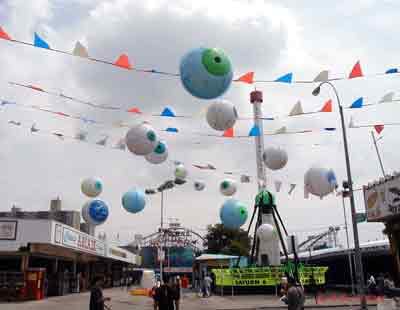
6th Sharjah Biennial Catalogue, April '03 - essay by Peter Lewis
The artist team Liz-N-Val has collaborated for over twenty years. Liz-N-Val use unorthodox materials, processes and concepts as a 'direct' approach to making art. The deployment of mass-media, in an unmediated form entering into the art medium, and the intervention into its distribution systems, combines with the use of public space expanded the individual possibilities for a post-conceptual practice. The artists have set precedents in the expanded field of art since the conceptual art movement. Liz-N-Val are the founders of Abstractrealism: the philosophy of "something from nothing Art". Abstractrealism is the logical outcome of Abstract Art and Realism.
MORE REVIEWS…
